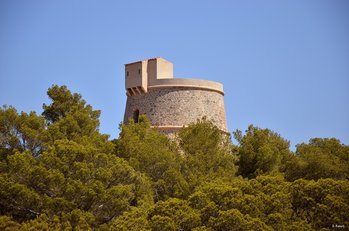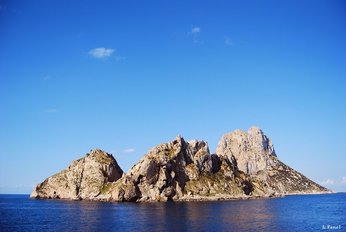The Tanit Dreams experience!
*Dynamic Yoga
*Meditation of the Origin
*Art & Butoh Dance therapy
*Golden Circle
*Hosting in the beautiful finca Casa Nube.
*Detox vegetarian meals .
*Meditation of the Origin
*Art & Butoh Dance therapy
*Golden Circle
*Hosting in the beautiful finca Casa Nube.
*Detox vegetarian meals .
"We created this project inspired by the beautiful act of co-creation. Our strong wish is to create a space for resting and growing in nature, in the vision of a tribe. This festival is an opportunity to strengthen our love for nature, art, self-knowledge and our existence as a poetic inspiration. A different holiday, in which we nourish and to enkindle ourselves as muses to the world. And spark both personally and professionally, this is our ultimate dream challenge. "
" Hemos creado este proyecto con la inspiración de la co-creación de belleza elevando los buenos deseos del descanso y cultivo en la naturaleza, bajo la visión de la tribu. Este festival es una oportunidad para confirmar y afianzar nuestro amor a la naturaleza, al arte, al auto-conocimiento y a la inspiración poética del existir. Unas vacaciones diferentes para nutrirnos y encendernos como musas para el mundo. En lo personal y en lo profesional de nosotras es nuestro último soñado desafío."

Formerly in Ibiza was a goddess that all its inhabitants worshiped. In the Carthaginian era of the island, from the V century. C., Tanit became the goddess of Ibiza, and she has continued to this day in which this deity is still remembered and revered.
Tanit, or Tanith, is the Great Goddess of Carthage, worshipped there as its chief Deity. She is a Sky Goddess who ruled over the Sun, Stars, and Moon; and as a Mother Goddess She was invoked for fertility. The palm tree is Hers, as the desert version of the Tree of Life; and as symbolic of the life-force of the Earth the serpent is Hers as well—in fact Her name means "Serpent Lady". She is identified with both Ashtart (Astarte) and Athirat, and Her other symbols include the dove, grapes and the pomegranate (both symbolic of fruitfulness and fertility), the crescent moon, and, like Ashtart, the lion.
Carthage was a city of the Phoenician colony in northern Africa, not far from the modern city of Tunis in Tunisia. Carthage, the Roman rendition of the Phoenician name Karthadasht, which means "New Town", was founded in around the 9th century BCE, by Dido ("Giver" or "Grantor [of prayers]", or alternately "Wanderer") or Elissa (from the Phoenician Elishat), the daughter of the King of Tyre in Roman legend. Dido, however, being also used as an epithet of the Phoenician Moon-Goddess, is probably to be considered an aspect of or alternate name for Tanit, the patron Goddess of Carthage. Worship of Tanit dates to the 5th century BCE, and it is unsure whether Tanit was a local deity adapted by the Phoenician colonists or a version of Ashtart/Athirat they had brought with them from Phoenicia.
Tanit was the highest Deity of that city, called "the Lady of Carthage". With Her consort Ba'al-Hammon, the God of the Sky, She watched over and protected Carthage. As a protective Deity She had some martial aspects, and like Ashtart could be depicted riding a lion holding a spear or long sceptre. In Carthage She was said to have an Oracle; perhaps this is connected to Her role as Star-Goddess.
Tanit has Her own abstract symbol, peculiarly Hers (and accordingly called the "symbol of Tanit"): a triangle with a circle at the top, with a horizontal line between the two; sometimes two additional vertical bars come from the ends of the horizontal. This has been interpreted as either a stylization of an altar, or a woman or Goddess in a long dress, Her arms upraised in an attitude of worship or blessing. Some stelae do show a more realistic depiction of the Goddess in this attitude, so my money is on it as an abstract depiction of a woman. This symbol is found all over Carthage, though there is only one example of it in Phoenicia itself.
As Tanit was also a Goddess of the Sky, the Romans named Her Dea Caelestis, "the Heavenly Goddess", or Virgo Caelestis, "the Heavenly Virgin". On coins of the 4th and 3rd centuries BCE She is occasionally depicted riding a lion and holding a lance; generally She is shown in portrait form wearing a diadem or crown, with wheat sheaves bound in Her hair as a wreath, the crescent moon behind.
Tanit's worship was spread from Carthage to Spain, Malta and Sardinia, especially by soldiers. The temple on the acropolis of Selinus in Sicily may be Hers, for examples of Her symbol have been found there. Under Her name Virgo Caelestis, Tanit/Juno had a shrine in Rome on the north side of the Capitoline Hill.
Also called: Tanith, Tent, Thinit, Tinnit, Rat-tanit; Tanis is the Greek version of Her name. She was called "Lady of Carthage", "Lady of the Sanctuary", and "the Face of Ba'al". The Romans called Her Dea Caelestis, "the Heavenly Goddess", Virgo Caelestis "the Heavenly Virgin", and Caelestis Afrorum Dea, "the African/Carthaginian Heavenly Goddess", as well as the assimilated name Juno Caelestis.
She was identified with Aphrodite, Demeter, and Artemis by the Greeks and with Juno by the Romans, especially their Juno Lucina, Goddess of Light and Childbirth. The Romans also associated Her with theMagna Mater, the Great Mother, Rhea or Kybele.
Ibiza preserves the cave shrine erected in honor of the goddess Tanit. Culleram Cave is located in the municipality of San Juan, in the northeast of Ibiza was discovered in 1907 by archeologist Carles Roman. Since then several rescue excavations that allowed various archaeological pieces were made, many of which can now be seen in the Archaeological Museum of Ibiza.
Tanit, or Tanith, is the Great Goddess of Carthage, worshipped there as its chief Deity. She is a Sky Goddess who ruled over the Sun, Stars, and Moon; and as a Mother Goddess She was invoked for fertility. The palm tree is Hers, as the desert version of the Tree of Life; and as symbolic of the life-force of the Earth the serpent is Hers as well—in fact Her name means "Serpent Lady". She is identified with both Ashtart (Astarte) and Athirat, and Her other symbols include the dove, grapes and the pomegranate (both symbolic of fruitfulness and fertility), the crescent moon, and, like Ashtart, the lion.
Carthage was a city of the Phoenician colony in northern Africa, not far from the modern city of Tunis in Tunisia. Carthage, the Roman rendition of the Phoenician name Karthadasht, which means "New Town", was founded in around the 9th century BCE, by Dido ("Giver" or "Grantor [of prayers]", or alternately "Wanderer") or Elissa (from the Phoenician Elishat), the daughter of the King of Tyre in Roman legend. Dido, however, being also used as an epithet of the Phoenician Moon-Goddess, is probably to be considered an aspect of or alternate name for Tanit, the patron Goddess of Carthage. Worship of Tanit dates to the 5th century BCE, and it is unsure whether Tanit was a local deity adapted by the Phoenician colonists or a version of Ashtart/Athirat they had brought with them from Phoenicia.
Tanit was the highest Deity of that city, called "the Lady of Carthage". With Her consort Ba'al-Hammon, the God of the Sky, She watched over and protected Carthage. As a protective Deity She had some martial aspects, and like Ashtart could be depicted riding a lion holding a spear or long sceptre. In Carthage She was said to have an Oracle; perhaps this is connected to Her role as Star-Goddess.
Tanit has Her own abstract symbol, peculiarly Hers (and accordingly called the "symbol of Tanit"): a triangle with a circle at the top, with a horizontal line between the two; sometimes two additional vertical bars come from the ends of the horizontal. This has been interpreted as either a stylization of an altar, or a woman or Goddess in a long dress, Her arms upraised in an attitude of worship or blessing. Some stelae do show a more realistic depiction of the Goddess in this attitude, so my money is on it as an abstract depiction of a woman. This symbol is found all over Carthage, though there is only one example of it in Phoenicia itself.
As Tanit was also a Goddess of the Sky, the Romans named Her Dea Caelestis, "the Heavenly Goddess", or Virgo Caelestis, "the Heavenly Virgin". On coins of the 4th and 3rd centuries BCE She is occasionally depicted riding a lion and holding a lance; generally She is shown in portrait form wearing a diadem or crown, with wheat sheaves bound in Her hair as a wreath, the crescent moon behind.
Tanit's worship was spread from Carthage to Spain, Malta and Sardinia, especially by soldiers. The temple on the acropolis of Selinus in Sicily may be Hers, for examples of Her symbol have been found there. Under Her name Virgo Caelestis, Tanit/Juno had a shrine in Rome on the north side of the Capitoline Hill.
Also called: Tanith, Tent, Thinit, Tinnit, Rat-tanit; Tanis is the Greek version of Her name. She was called "Lady of Carthage", "Lady of the Sanctuary", and "the Face of Ba'al". The Romans called Her Dea Caelestis, "the Heavenly Goddess", Virgo Caelestis "the Heavenly Virgin", and Caelestis Afrorum Dea, "the African/Carthaginian Heavenly Goddess", as well as the assimilated name Juno Caelestis.
She was identified with Aphrodite, Demeter, and Artemis by the Greeks and with Juno by the Romans, especially their Juno Lucina, Goddess of Light and Childbirth. The Romans also associated Her with theMagna Mater, the Great Mother, Rhea or Kybele.
Ibiza preserves the cave shrine erected in honor of the goddess Tanit. Culleram Cave is located in the municipality of San Juan, in the northeast of Ibiza was discovered in 1907 by archeologist Carles Roman. Since then several rescue excavations that allowed various archaeological pieces were made, many of which can now be seen in the Archaeological Museum of Ibiza.

Antiguamente en Ibiza existía una diosa a la que todos sus habitantes rendían culto. En la época cartaginesa de la isla, a partir del siglo V a. C., Tanit se convirtió en la diosa de Ibiza, y así ha continuado hasta nuestros días en los que esta deidad sigue siendo recordada y venerada.
La diosa Tanit fue una de las más importantes diosas de la mitología cartaginesa. No solo se la conoce en Ibiza, también se le rendía culto en muchos lugares del Mediterráneo (el norte de África, Líbano Chipre, Cerdeña, Sicilia o Benidorm) que pertenecieron al imperio cartaginés. Pero sin ninguna duda, fue en Ibiza donde la adoración de Tanit se hizo más palpable y donde se han encontrado diversos templos de adoración.
Tanit fue la Diosa del amor, la fertilidad, la vida, la prosperidad, la cosecha, la muerte y la luna. Fue una de las diosas más importantes de los cartagineses, ya que defendía una isla sagrada, como era Ibiza, defendida de animales venenosos. Tanit era una divinidad de carácter astral, representada por el creciente lunar, asociada al dios de la agricultura y por tanto, a la fertilidad de la tierra, de los animales y de las personas. Tenía igualmente un carácter de diosa del subsuelo, y por tanto del infierno, la salud y la muerte, por lo que era protectora de los difuntos. Tanit también fue asociada con el león, influencia de la diosa egipcia Sehmet y que le confería un carácter guerrero casi inédito en la época. Sin embargo, Tanit habría alcanzado también un carácter de protectora de la ciudad y valedora de la buena fortuna.
Ibiza conserva la cueva santuario erigida en honor de la diosa Tanit. La Cueva de Es Culleram, situada en el municipio de San Juan, en el noreste de Ibiza fue descubierta en 1907 por el arqueólogo Carles Roman. A partir de entonces se realizaron varias excavaciones que permitieron rescatar diversas piezas arqueológicas, muchas de las cuales pueden verse actualmente en el Museo de Arqueología de Ibiza.
La diosa Tanit fue una de las más importantes diosas de la mitología cartaginesa. No solo se la conoce en Ibiza, también se le rendía culto en muchos lugares del Mediterráneo (el norte de África, Líbano Chipre, Cerdeña, Sicilia o Benidorm) que pertenecieron al imperio cartaginés. Pero sin ninguna duda, fue en Ibiza donde la adoración de Tanit se hizo más palpable y donde se han encontrado diversos templos de adoración.
Tanit fue la Diosa del amor, la fertilidad, la vida, la prosperidad, la cosecha, la muerte y la luna. Fue una de las diosas más importantes de los cartagineses, ya que defendía una isla sagrada, como era Ibiza, defendida de animales venenosos. Tanit era una divinidad de carácter astral, representada por el creciente lunar, asociada al dios de la agricultura y por tanto, a la fertilidad de la tierra, de los animales y de las personas. Tenía igualmente un carácter de diosa del subsuelo, y por tanto del infierno, la salud y la muerte, por lo que era protectora de los difuntos. Tanit también fue asociada con el león, influencia de la diosa egipcia Sehmet y que le confería un carácter guerrero casi inédito en la época. Sin embargo, Tanit habría alcanzado también un carácter de protectora de la ciudad y valedora de la buena fortuna.
Ibiza conserva la cueva santuario erigida en honor de la diosa Tanit. La Cueva de Es Culleram, situada en el municipio de San Juan, en el noreste de Ibiza fue descubierta en 1907 por el arqueólogo Carles Roman. A partir de entonces se realizaron varias excavaciones que permitieron rescatar diversas piezas arqueológicas, muchas de las cuales pueden verse actualmente en el Museo de Arqueología de Ibiza.
We love Ibiza

About Ibiza the one thing you should know about Ibiza, is that the island will never cease to surprise you, there is always something new to discover.
Her rich history is intwined with ample mythical stories and legends. For all the facts and historical background we are happy to live here. At our festival we share our way of enjoying the island. Because we are resident women on Ibiza, living Tanit Dreams
Click her for more information about the magical island.
Tipical and magic places to visit in Ibiza:
http://www.ibiza-spotlight.com/beaches_i.htm
http://www.ibizaruralvillas.com/post/mercadillo-hippy-en-san-juan-de-labritja-ibiza
Sobre Ibiza una cosa que debes saber, es que no para de sorprenderte, siempre hay algo para descubrir. Su rica historia esta conectada con lo místico y lo legendario. Por todos estos hechos y pasado histórico, estamos felices de vivir en Ibiza. Desde nuestro Festival compartimos nuestra manera disfrutar la isla. Porque somos mujeres residiendo en Ibiza, vivimos Tanit Dreams.
Acceder a más información sobre la isla mágica.
Her rich history is intwined with ample mythical stories and legends. For all the facts and historical background we are happy to live here. At our festival we share our way of enjoying the island. Because we are resident women on Ibiza, living Tanit Dreams
Click her for more information about the magical island.
Tipical and magic places to visit in Ibiza:
http://www.ibiza-spotlight.com/beaches_i.htm
http://www.ibizaruralvillas.com/post/mercadillo-hippy-en-san-juan-de-labritja-ibiza
Sobre Ibiza una cosa que debes saber, es que no para de sorprenderte, siempre hay algo para descubrir. Su rica historia esta conectada con lo místico y lo legendario. Por todos estos hechos y pasado histórico, estamos felices de vivir en Ibiza. Desde nuestro Festival compartimos nuestra manera disfrutar la isla. Porque somos mujeres residiendo en Ibiza, vivimos Tanit Dreams.
Acceder a más información sobre la isla mágica.







